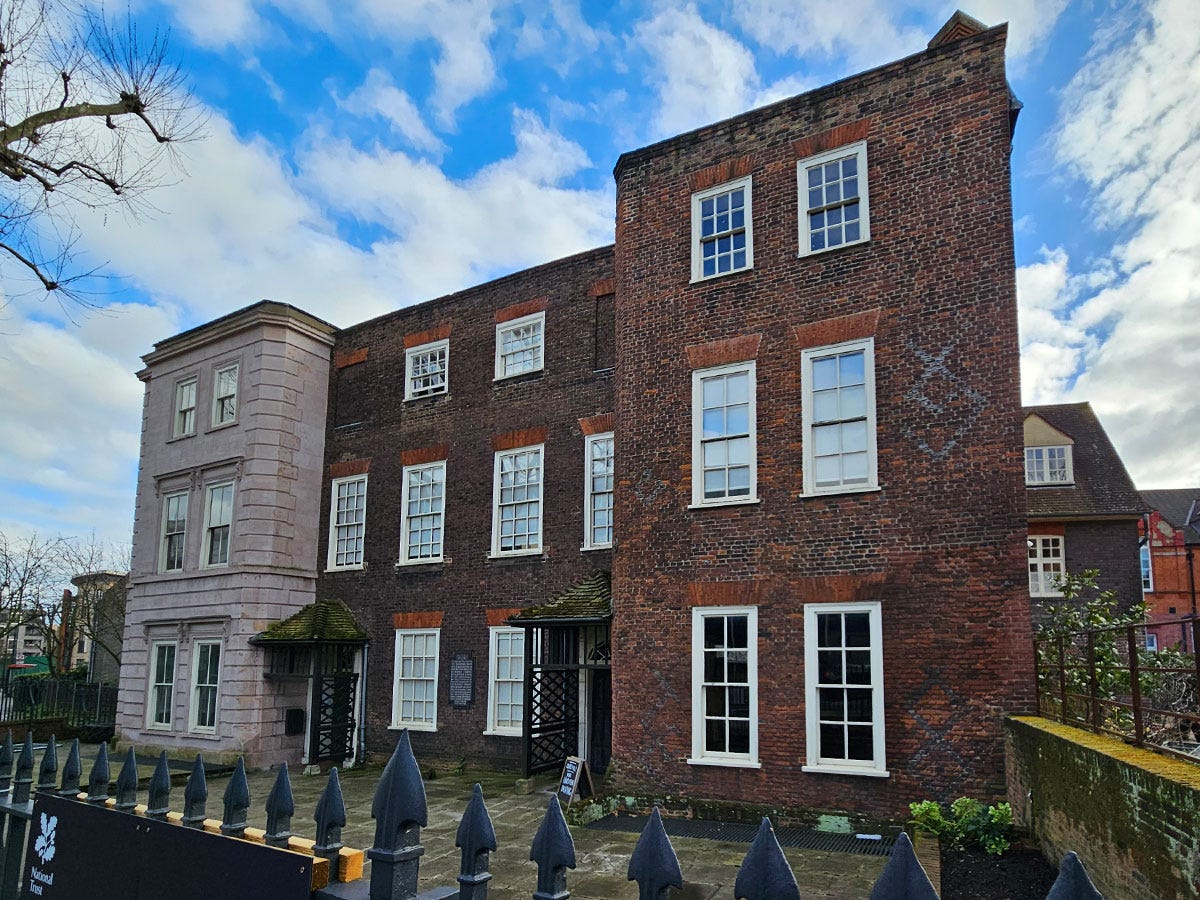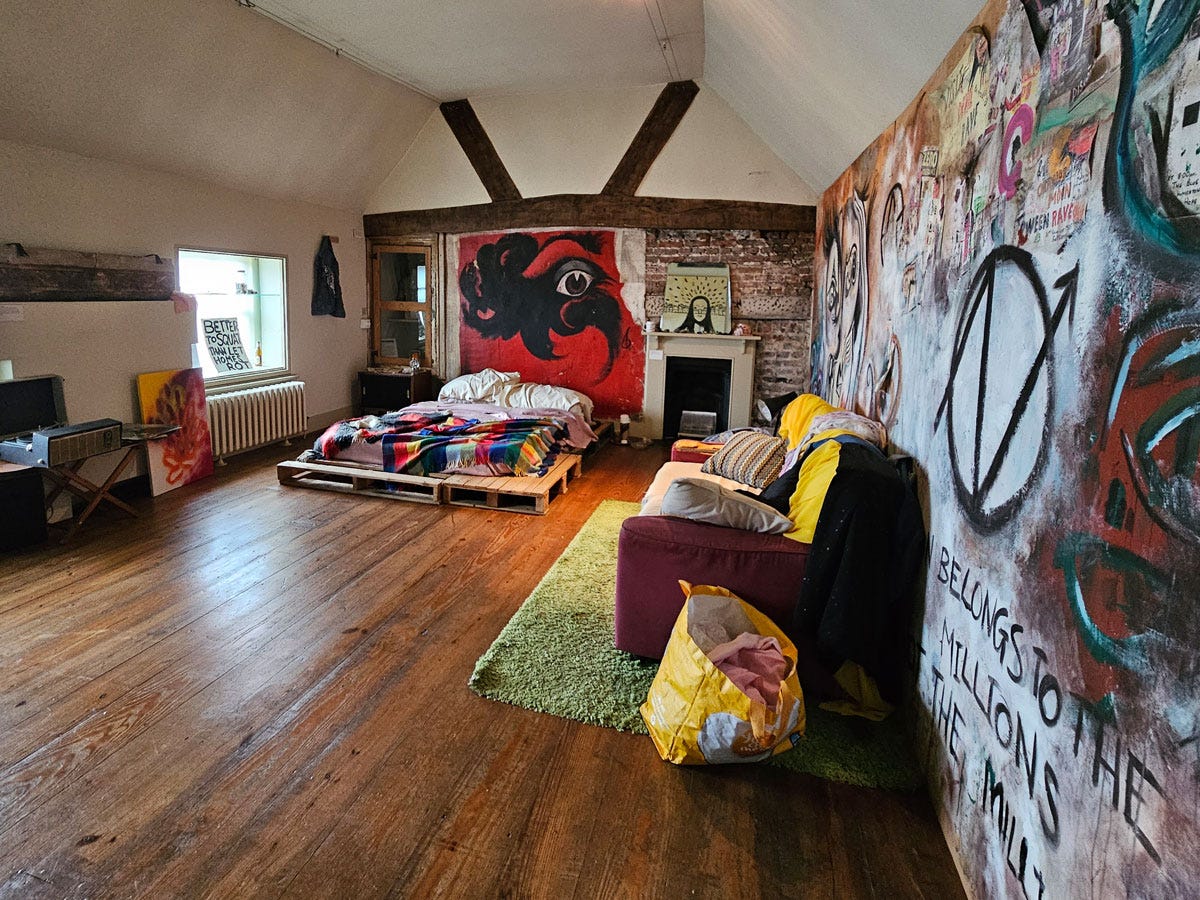The squatters who saved a historic home for the public
And how the mark they left on the house is now preserved as part of its history.
Sutton House (as it’s known today) is one of the oldest surviving residential buildings in London. Built in 1535 for Ralph Sadleir – who worked for Thomas Cromwell and went on to become Secretary of State to Henry VIII – it’s a three-storey brick house on what is now a main road in Hackney, east London. At the time, the area was mainly fields and, being outside the boundary of the City of London, was considered countryside. While brick houses weren’t unheard of in the early 16th Century, they were uncommon enough to make a statement, and as such, Sadlier’s home was known as the ‘Bryk Place’.
Another of its claims to fame is that it had one of the first indoor toilets in a London home. Known as a garderobe (because people also hung their clothes in the room – they thought the smell of ammonia from the toilet would keep moths away!), it was an ‘en suite’ on the second floor with a chute that collected the waste in an exterior-accessed pit at the base of the house. Pity the poor household staff member, known as a ‘gong boy’, who had to open the chute every time someone used it, and muck out the waste when it was full. There’s a possibility that Henry VIII himself might have used the garderobe.
Sutton House also provided inspiration and source material for Hilary Mantel’s ‘Wolf Hall’.
But this history – both grand and smelly – was in danger of being lost towards the end of the 20th Century.
By this time, the house had had many owners, it had been subdivided into two residences, half of it repurposed as a school for a time, at other times used by a church institute, and as offices for charitable organisations. Despite being bought in the 1930s by the National Trust (the heritage organisation that cares for historic homes and gardens across the UK), it was empty, falling into disrepair, and at risk of being sold off.
While the National Trust was contemplating its future, a woman from Germany (possibly named Christine) saw an opportunity.
In 1985 she moved in with a group of squatters, and – put aside any negative stereotypes that may come to mind – they made concerted efforts to take care of the property and open it up to the community. It was renamed The Blue House and run as a co-op, featuring a café, and hosting live music events and arts and crafts workshops. ‘Christine’ kept tabs on who lived there and what they did, and even ensured the house’s valuables were protected. The Linenfold Parlour – which is lined with rare and historically significant oak carved panels that mimic folds in fabric – was kept locked and any entry supervised.
A few years later, when the National Trust was planning to sell Sutton House to developers, rather than spend the money to conserve it, there was an outcry from locals. The building, and access to it, had become important to them and they didn’t want to lose it. The ‘Save Sutton House Campaign’ was launched, and the community convinced the National Trust to invest in its restoration.
Almost 40 years on, alongside the conserved Tudor and Georgian interiors, and the stories of its various inhabitants, is a record of the contribution of the squatters.
On the top floor of the house is a room dedicated to their part in the house’s history, which features art (or graffiti) painted on the wall during their occupation in the ‘80s. When I visited recently, a guide told me proudly that it’s the only National Trust property with preserved contemporary graffiti.
The historic recreation of the squatters’ room contains artifacts from the period, including a record player and vinyl, and a studded denim jacket. The National Trust worked with some of the former squatters to ensure an authentic representation. They even commissioned further art/graffiti incorporating ephemera from the period.
It may feel incongruous to see a 20th Century mural touching up against a Tudor beam on an almost 500-year-old wall, but the National Trust is committed to celebrating the full, colourful history of Sutton House.
The guide told me: “There’s a misconception that the squatters wouldn’t have looked after the place, but they knew it meant something and was important. The squatters were the first people to open the house up to the public, and it’s because of them that the house is still around now.”
And as such, each winter, when staff do their annual deep clean, as much care and precision is used when conserving the 1980s studded denim jacket as the 16th Century oak linenfold carved panels.











